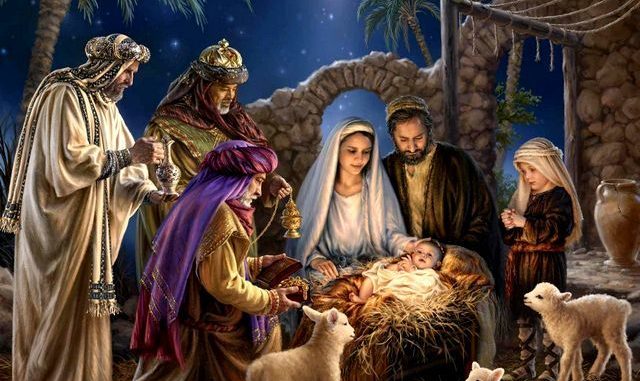
The Gospel of Luke offers a rich tapestry of narratives that intertwine to reveal the miraculous birth and early life of Jesus Christ, His mission, and His proclamation of the kingdom of God. These accounts are not only foundational for understanding the Christian faith but also serve as a bridge connecting the Old and New Testaments, showcasing Jesus as the ultimate Redeemer promised throughout the ages.
The Dawn of Redemption: Reflections on Luke 2:1-20 and Luke 4:14-22
The Miraculous Birth: Luke 2:1-20
In the stillness of a Bethlehem night, a story unfolded that would alter the course of history. Luke 2:1-20 recounts the birth of Jesus, an event marked by simplicity and divine wonder. This passage is a cornerstone for Christian belief, highlighting the miraculous nature of Jesus’ entry into the world.
A Humble Beginning
The narrative begins with a decree from Caesar Augustus, calling for a census that sets the stage for the fulfillment of prophecy. Joseph and Mary travel to Bethlehem, where Jesus is born in a manger, a sign of the humility that would characterize His life and ministry. This humble beginning fulfills the prophecy of Micah 5:2, which foretells the birth of a ruler in Bethlehem.
Angelic Announcements and Shepherds’ Witness
The birth is heralded by angels proclaiming “good news of great joy” to shepherds in the fields. This announcement to the shepherds, individuals of low social status, underscores the inclusivity of Jesus’ mission. Salvation is indeed available to all, regardless of social standing. Consequently, the shepherds’ subsequent visit to the manger and their spreading of the news symbolize the spreading of the Gospel that will follow Jesus’ ministry.
The Proclamation of Mission: Luke 4:14-22
Fast-forwarding to the early days of Jesus’ public ministry, Luke 4:14-22 depicts a pivotal moment when Jesus reveals His mission and identity as the Messiah. Returning to Nazareth, He reads from the scroll of Isaiah in the synagogue, proclaiming the fulfillment of prophecy in Himself.
The Fulfillment of Isaiah
Jesus reads from Isaiah 61:1-2, which speaks of the anointed one sent to proclaim good news to the poor, freedom for prisoners, recovery of sight for the blind, and to set the oppressed free. By declaring, “Today this scripture is fulfilled in your hearing,” Jesus certainly identifies Himself as the Servant of the Lord, the One who brings God’s salvation to fruition.
The Reaction of the People
The initial marvel at Jesus’ gracious words quickly turns to skepticism as the townspeople question His claim. So, this foreshadows the mixed reception Jesus will encounter throughout His ministry. It’s a path that will ultimately lead to the cross.
Recognizing Jesus as the Fulfillment of Prophecy
The narratives in Luke 2 and 4 are not isolated stories; they are deeply rooted in the history and prophecy of the Old Testament. Jesus’ birth, ministry, and proclamation are certainly the culmination of a long-awaited promise, a theme that runs like a golden thread through the tapestry of Scripture.
The Ultimate Redeemer
From Genesis to Malachi, the Old Testament anticipates a Redeemer who will restore the broken relationship between God and humanity. Jesus’ arrival and mission indeed fulfills this anticipation, as He embodies the roles of Prophet, Priest, and King. Thus, His teachings, miracles, and ultimately His sacrificial death and resurrection bring about the redemption that the prophets foresaw.
Relating to God’s Plan of Redemption Throughout History
The accounts in Luke 2 and 4 are more than historical events. They have indeed become integral to the narrative of God’s redemptive plan. This plan is not linear but unfolds through covenants, prophecies, and the lives of individuals across centuries.
A Tapestry of Redemption
The birth of Jesus is the incarnation of God’s promise–a moment where the divine intersects with the temporal. Therefore, His proclamation in Nazareth is a declaration that the kingdom of God has come near. It accordingly invites all to partake in the redemption He offers.
A Call to Recognize and Respond
These passages call readers to recognize Jesus as the promised Messiah and to respond to His message of redemption. The shepherds responded by spreading the news of His birth. Conversely, the people of Nazareth were divided in their response to His proclamation. Likewise, these responses challenge us to consider our own reaction to the person and work of Jesus Christ.
Conclusion: The Legacy of the Redeemer
The legacy of Jesus, as depicted in Luke 2:1-20 and Luke 4:14-22, continues to shape hearts and history. His miraculous birth signifies God’s intimate involvement in the human story. And His mission and proclamation invites us into a restored relationship with our Creator. So, recognizing Jesus as the fulfillment of Old Testament prophecies is an invitation to experience the power of God’s redemptive plan.
As we reflect on these passages, we are reminded that the story of redemption is an ongoing reality. The birth and early ministry of Jesus mark the beginning of a new chapter in God’s redemptive work. It’s one that each of us is invited to join, as we live out the implications of the Gospel in our own lives.